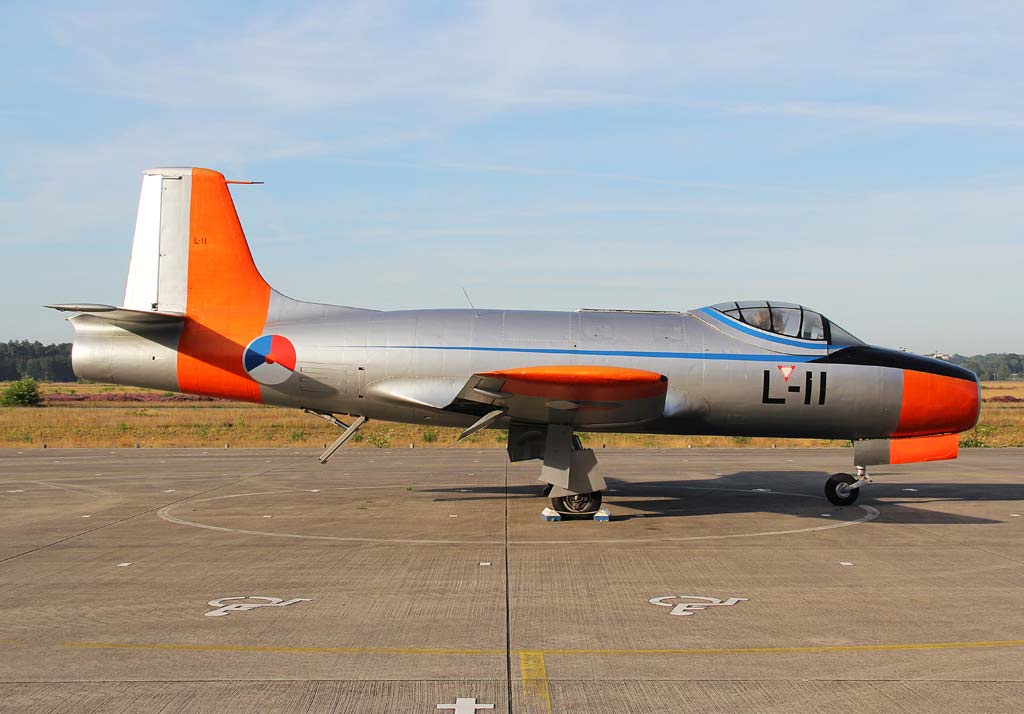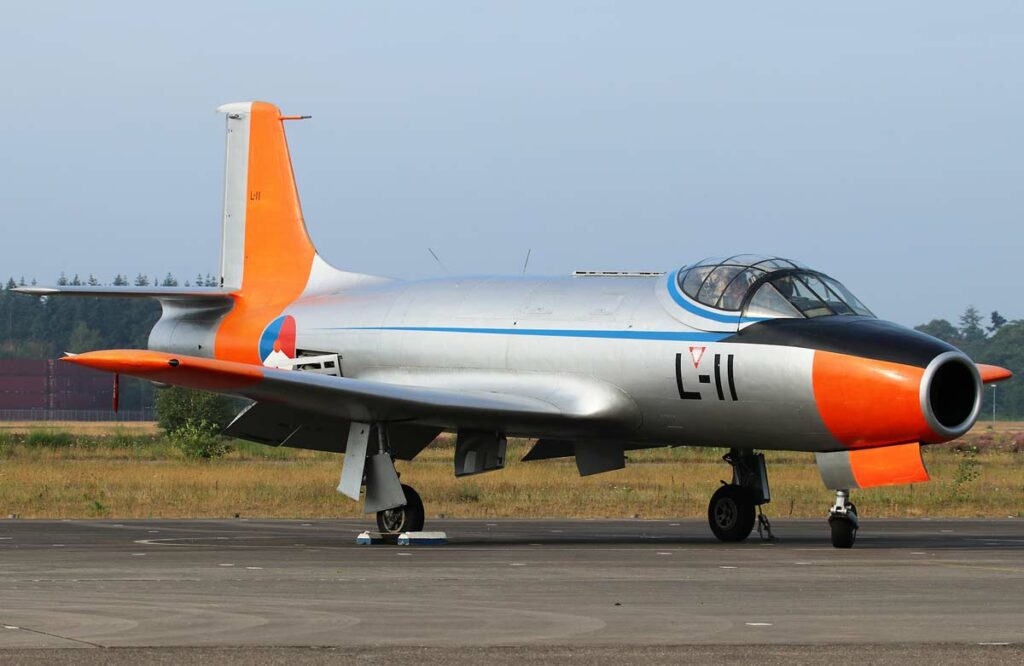The Fokker S.14 Machtrainer, a Dutch two-seater jet trainer with a Rolls-Royce Derwent engine, known for side-by-side seating and high performance.
In brief
The Fokker S.14 Machtrainer was a pioneering jet trainer aircraft developed by Fokker for the Royal Netherlands Air Force. First flown in 1951, it was one of the earliest dedicated jet-powered trainers. The S.14 featured innovative design elements, including side-by-side seating for the crew and a Rolls-Royce Derwent turbojet engine. Despite its advanced design and favorable evaluations, the S.14 saw limited production and service, with only 21 units built. It served the Royal Netherlands Air Force until 1967 and was known for its ease of handling and forgiving flight characteristics. The Machtrainer’s development marked a significant step in jet trainer design but struggled to compete in the global market.
The Fokker S.14 Machtrainer was a significant development in the field of jet-powered trainer aircraft, representing a transition from propeller-driven trainers to jet trainers in the 1950s.

History of the Development of the Fokker S.14 Machtrainer
In the late 1940s, the rapid development of jet technology led to a growing need for dedicated jet trainers. The Fokker S.14 Machtrainer was developed in response to this need, with the objective of training pilots in the handling of jet aircraft. Development started at the behest of British engine manufacturer Rolls-Royce, who sought a manufacturer for a new trainer aircraft powered by their Derwent turbojet engine.
Fokker, a Dutch aircraft manufacturer, took on the challenge and designed the S.14 Machtrainer, a two-seater military training jet. The first prototype performed its maiden flight on 19 May 1951. The aircraft was evaluated by renowned pilots, including Chuck Yeager, and received praise for its ease of handling.
Despite initial interest, the S.14 struggled to secure orders. The Royal Netherlands Air Force ordered 20 aircraft, with the first production aircraft flown on 15 January 1955. The aircraft served in the Dutch Air Force until 1967, but did not achieve significant sales success internationally.
Design of the Fokker S.14 Machtrainer
The Fokker S.14 was a low-wing monoplane featuring all-metal construction predominantly of lightweight alloys. The design incorporated a wide fuselage to accommodate a spacious cockpit with side-by-side seating for two crew members, with enough room for a third member if needed. The aircraft was equipped with pneumatically-actuated door-type air brakes and a retractable tricycle undercarriage.
The S.14 was powered by a Rolls-Royce Derwent engine, located in the center of the fuselage above the low-mounted wing, separated from the cockpit by a fireproof bulkhead. The aircraft’s air intake was a central circular inlet in the nose. Both aircrew were provided with Martin-Baker-built ejection seats, and the canopy was jettisonable and operated electrically.
Performance of the Fokker S.14 Machtrainer
The S.14 Machtrainer was powered by a Rolls-Royce Derwent 8 turbojet engine, producing 3,450 lb of thrust. It had a maximum speed of 454 mph, a cruise speed of 365 mph, a range of 590 miles, and a service ceiling of 37,700 feet. Its rate of climb was 3,210 ft/min. The aircraft’s dimensions included a length of 43.7 feet, a wingspan of 39.3 feet, and a height of 15.4 feet. The empty weight was 8,300 lb, and the maximum take-off weight was 12,000 lb.
Variants of the Fokker S.14 Machtrainer
The primary variant of the Fokker S.14 was the Machtrainer, with 20 production models following a single prototype. The original prototype K-1 was modified with a more powerful Nene III engine in 1953 and used for further testing.

Military Use and Combat of the Fokker S.14 Machtrainer
The Fokker S.14 Machtrainer was used exclusively by the Royal Netherlands Air Force for training purposes. It was not designed for combat roles and had no armament. The S.14s served at various Dutch air stations, including Twenthe, Ypenburg, Gilze-Rijen, and Soesterberg. The aircraft’s role was to train pilots transitioning to jet-powered aircraft. The last two S.14s were withdrawn from Dutch service on 29 March 1965.
The Fokker S.14 Machtrainer played a crucial role in the transition to jet-powered flight training in the Royal Netherlands Air Force. Despite its advanced design and positive evaluations, it struggled to find a market outside the Netherlands, overshadowed by competing models like the T-33. The S.14’s legacy lies in its innovative approach to jet trainer design and its contribution to the training of Dutch pilots during its operational period.
Back to the Trainers section.